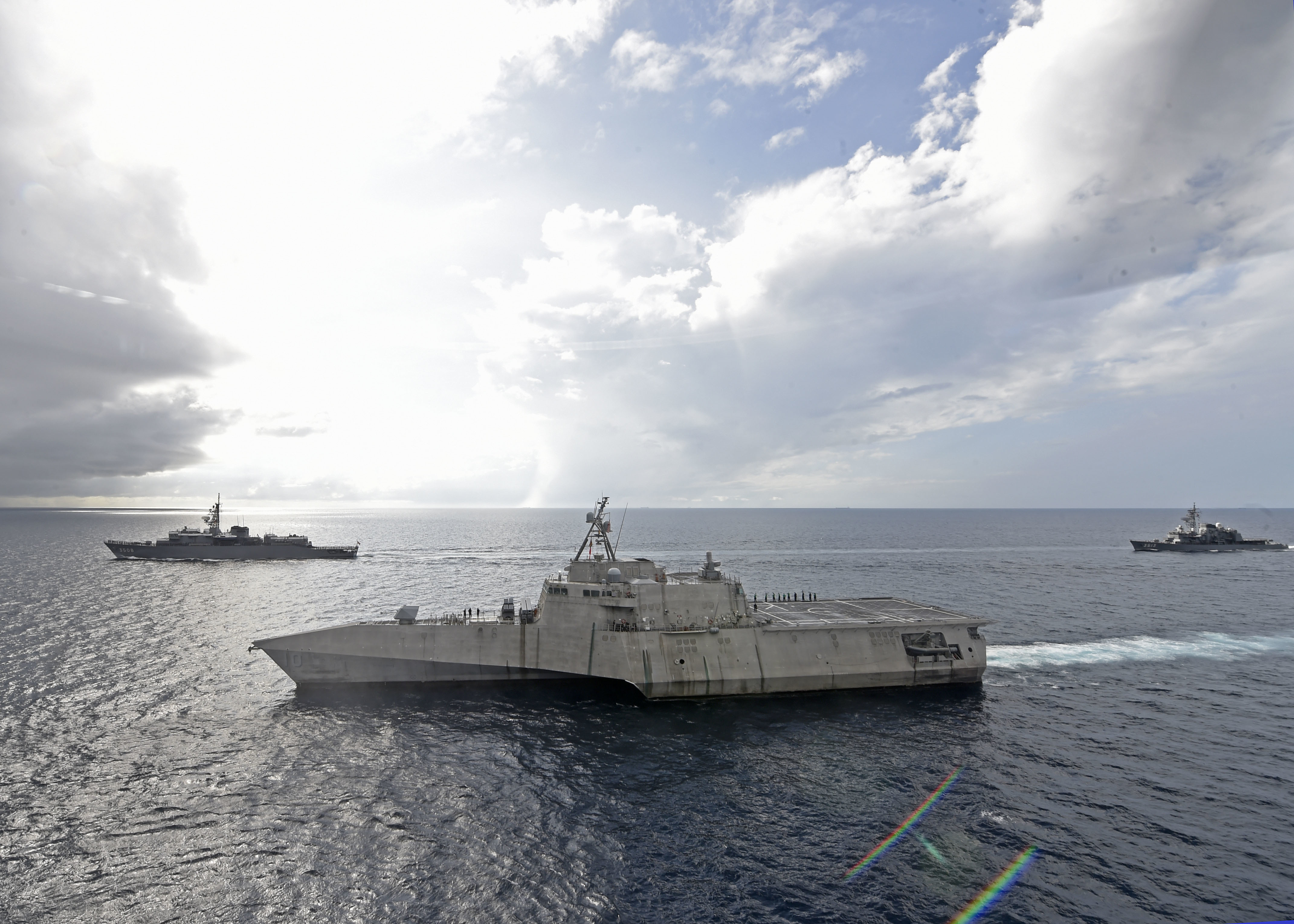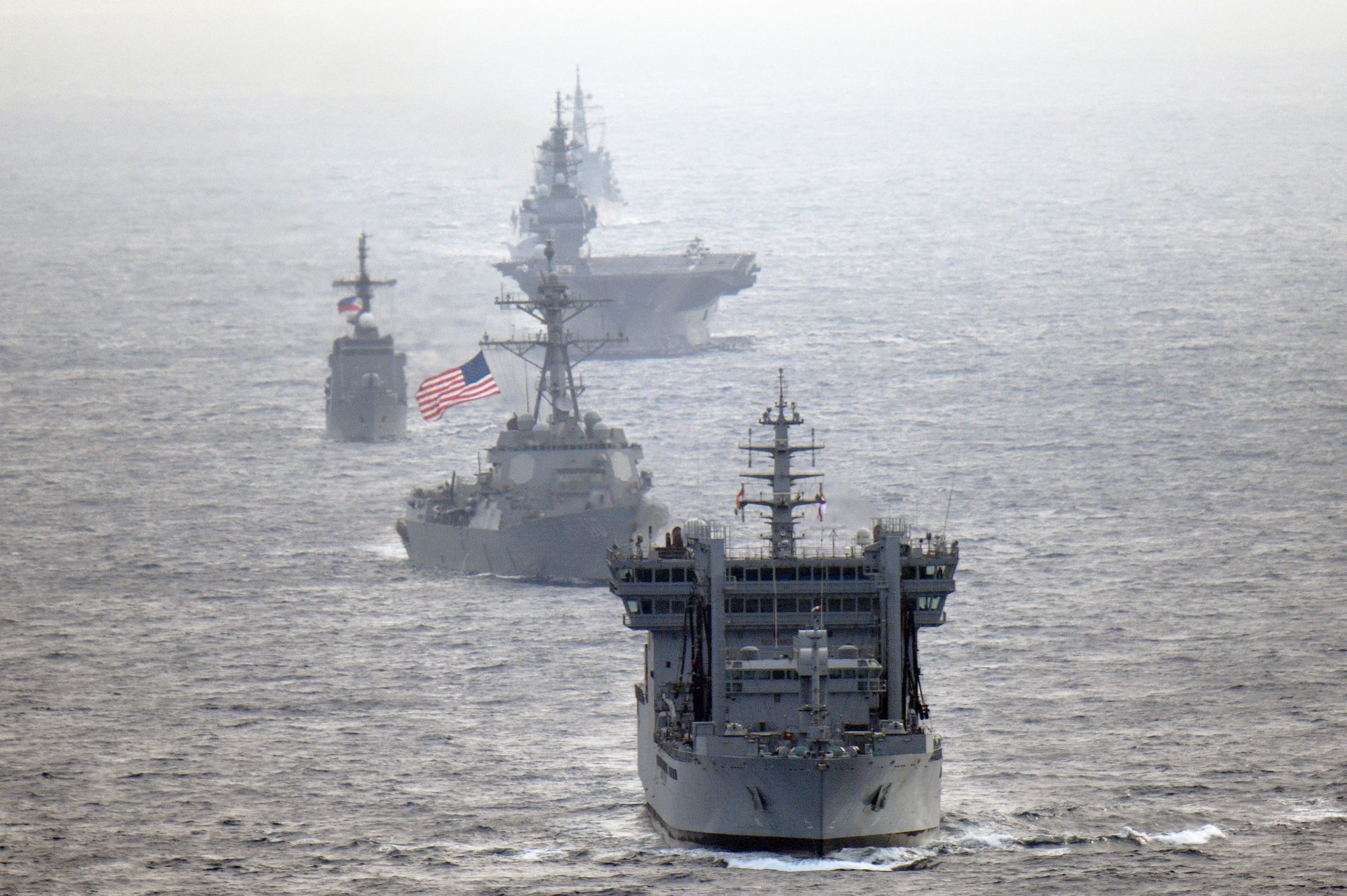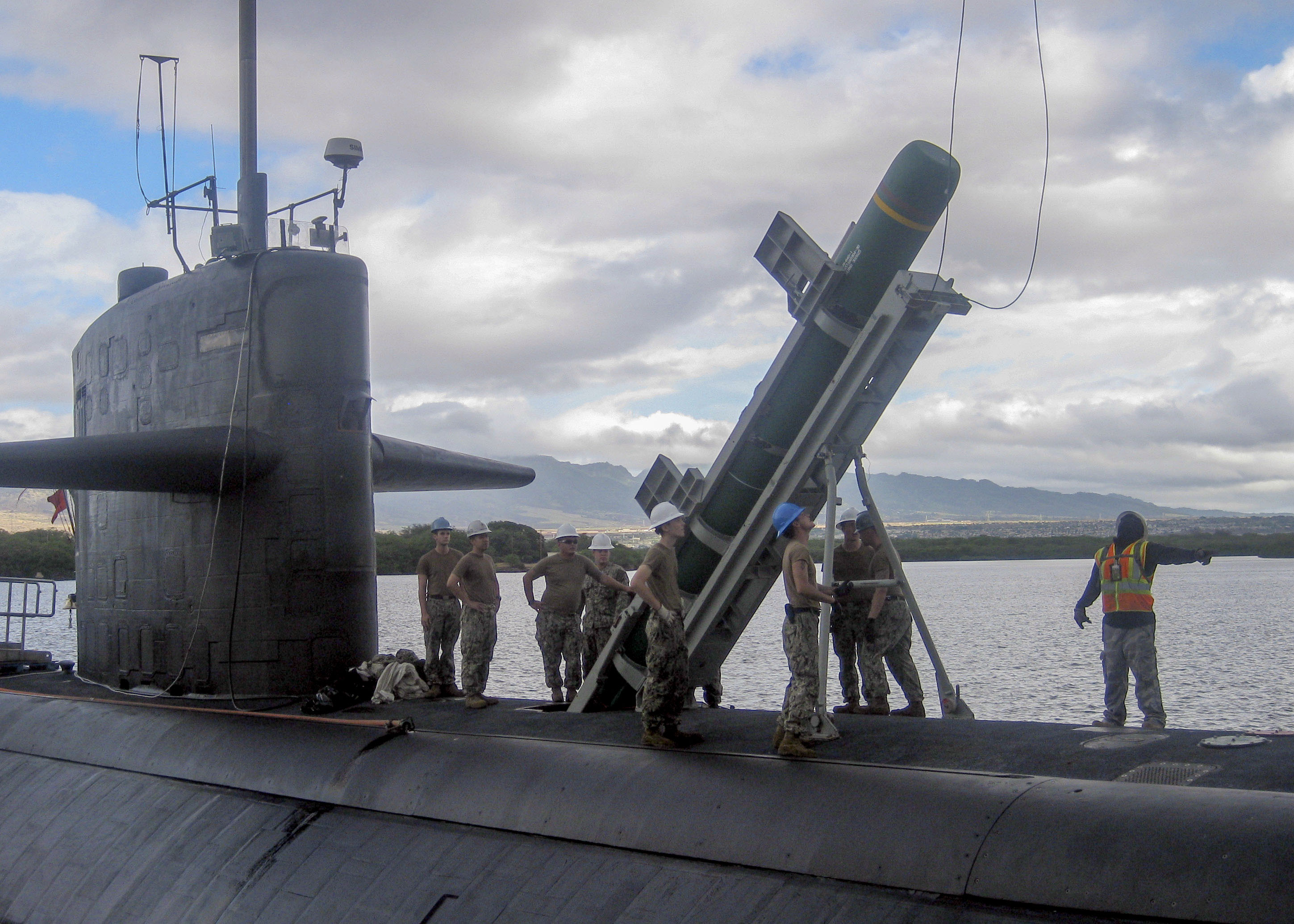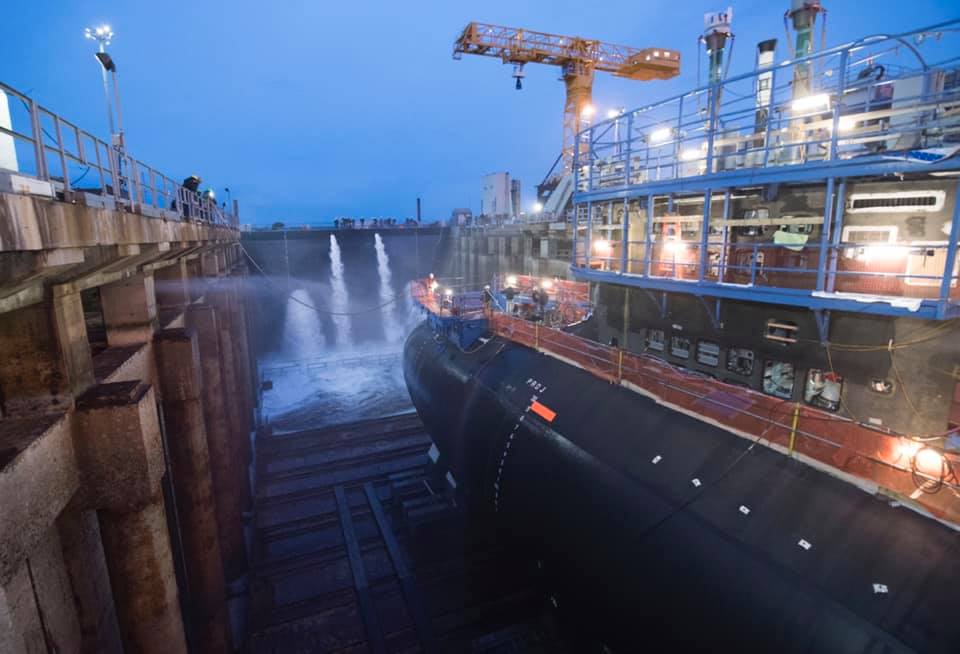
The House and the Senate agree they need to prioritize the Indo-Pacific region in their annual defense policy and spending bills. They don’t quite agree on how far to go in doing that, but an overriding sense that they need to start somewhere this year will likely get them to the creation of a Indo-Pacific fund to counter China, akin to the European Deterrence Initiative created in 2014 to push back against Russia.
In its version of the Fiscal Year 2021 National Defense Authorization Act, the Senate Armed Services Committee this year made the first volley, pitching a Pacific Deterrence Initiative that would do several things.
“First, the Pacific Deterrence Initiative will enhance budgetary transparency and congressional oversight. The National Defense Strategy refocused the Pentagon on strategic competition with China and Russia, elevating the priority of the Indo-Pacific and European theaters,” reads an article in War on the Rocks jointly written by the SASC chairman and ranking member, Sens. Jim Inhofe (R-Okla.) and Jack Reed (D-R.I.).
“The Pacific Deterrence Initiative would … [allow] Congress and the Pentagon to view the defense budget through a regional warfighting lens while increasing the visibility of options to advance U.S. priorities in the Indo-Pacific.”
The Senate’s PDI would also focus money on developing the right technologies for the theater and fielding and supporting those high-end systems west of the International Date Line.
“The Pentagon’s investments in modern platforms have not been sufficiently matched by investments in the joint and enabling capabilities those platforms require, especially as envisioned by new operational concepts. Posture and logistics remain serious weak spots for credible American deterrence in the Indo-Pacific region, a major point of emphasis in the National Defense Strategy, as well as a recent assessment submitted to Congress by the commander of Indo-Pacific Command, Admiral Phil Davidson,” the article reads.
“Investments in theater missile defense, expeditionary airfield and port infrastructure, fuel and munitions storage, and other areas will be key to America’s future force posture in the Indo-Pacific. As one example, it doesn’t matter how many F-35s the military buys if very few are stationed in the region, their primary bases have little defense against Chinese missiles, they don’t have secondary airfields to operate from, they can’t access prepositioned stocks of fuel and munitions, or they can’t be repaired in theater and get back in the fight when it counts. The Pacific Deterrence Initiative will incentivize increased focus on posture and logistics, and help measure whether these requirements are being matched with resources,” the article continues.
Third, it would reassure allies and partners of U.S. commitment to the region, “help U.S. allies and partners build the capabilities they need to protect their sovereignty. And the initiative will assure U.S. allies and partners that they will not face the threat of Chinese coercion or aggression alone.”
And fourth, it would “deter Chinese aggression by strengthening the credibility of American deterrence. … A well-distributed posture will complicate Chinese targeting of U.S. forces and infrastructure. More capable missile defenses at American bases will make them more difficult and costly to strike. Greater numbers of combat-credible U.S. forces in the Indo-Pacific will make it harder for China to seize and maintain the advantage early in a conflict. More resilient logistics will make it harder to take U.S. forces out of the fight or delay reinforcements. New land-based, long-range strike capabilities will provide a new source of resilient and survivable U.S. power projection. The Pacific Deterrence Initiative will focus resources on these efforts and others with the aim of injecting uncertainty and risk into Beijing’s calculus, leaving just one conclusion: ‘Not today. You, militarily, cannot win it, so don’t even try it.’”

For House Armed Services Committee Chairman Rep. Adam. Smith (D-Wash.), that might go a bit too far.
“I think what we need to do is we need to have strong enough partnerships and build the alliances in the region to force China to play by the rules,” he said today at a virtual Defense Writers Group event. He added that e would be “troubled” by a program that would create “an arms race approach” to deterring China.
Instead, the HASC bill proposes an Indo-Pacific Reassurance Initiative.
“The stronger and more aligned our Asian allies are – like South Korea, Japan, Thailand, Vietnam, Philippines, India – the more we can, in that case, deter China from aggressive actions like what’s happening along the line of control with India, or what has happened with a number of island chain disputes with South Korea, Philippines, Japan,” Smith said.
“If they are emboldened to think they can roll over these territories without any adequate response from the areas, then they’re more likely to do it.”
Still, Smith was confident the House and Senate could reconcile their differences.
HASC Ranking Member Rep. Mac Thornberry (R-Texas) said at a separate Defense Writers Group event on Monday that “the key this year is, get going.”
He noted that two years ago the NDAA included language to set up the Asia Reassurance Initiative Act, but he said the Defense Department hasn’t participated in the way Congress envisioned, leaving the program a diplomatic one without any military support behind it.
“We’ve had two years of delay because the Pentagon was afraid, I think, of losing money or something, I don’t know,” Thornberry said.
“But now you’ve got, [Defense Secretary Mark] Esper has voiced support. Again, you’ve got Republicans, Democrats, House, Senate. So the key thing this year is to get going.”
Inhofe and Reed addressed the ARIA issue in their article, writing that “we hear over and over again from foreign counterparts that they are hedging their bets for the future because they don’t know if they can count on the United States. Congress took a major step forward with the Asia Reassurance Initiative Act, which clearly outlined U.S. policy and interests in the region on security, economics, and human rights and boosted resources for the State Department and U.S. Agency for International Development (USAID). The Pacific Deterrence Initiative will be a complementary effort focused on the Department of Defense to demonstrate that America’s commitment to the region is bipartisan and enduring.”

The full Senate is debating the FY 2021 NDAA on the floor today, with Inhofe hoping to wrap up debate on amendments and have a final vote on the bill by Thursday evening, ahead of the July 4 holiday weekend.
At the same time, HASC will hold its full committee markup on July 1, with the markup typically lasting well into the evening and often times past midnight.
Thornberry said during the DWG event that his understanding of the upcoming House schedule was that the full House wouldn’t meet for the first two weeks of July while the House Appropriations Committee worked on their bills. In the final two weeks of July, the House would convene to vote on both the NDAA and the spending bills, including the defense spending bill.
Once the full House approves a marked-up NDAA, the HASC and SASC could begin to negotiate on areas where the two bills differ.
On Navy and Marine Corps areas of the budget, the two committees largely hewed to the Navy’s requested budget.
The HASC’s bill – coming into the full committee markup and still subject to further amendment – includes the Navy’s full shipbuilding request, plus $2.57 billion in procurement and advance procurement funds to restore a second Virginia-class attack submarine to maintain a two-a-year production rate at builders General Dynamics Electric Boat and Huntington Ingalls Industries’ Newport News Shipbuilding. The Navy had previously planned to buy two in FY 2021, but a last-minute cut at the White House level led the Navy to submit to Congress a shipbuilding request that included just one SSN. Lawmakers called this a non-starter.
On the aviation side, HASC added funding for six P-8A Poseidon maritime patrol aircraft, which the Navy has increasingly used in the Pacific, Mediterranean, North Atlantic and other hotspots around the globe. The committee also added funding to speed up the Navy’s procurement of its CMV-22 variant of the Osprey, which will replace the C-2A Greyhound as the carrier onboard delivery aircraft that ferries people, supplies and mail to aircraft carriers at sea. The bill does not cut F-35 aircraft from the Navy and Marine Corps but trims the overall program funding due to affordability challenges, unjustified cost items and expected savings in the next lot of aircraft to be built.
For weapons, the HASC adds nearly $60 million for ground-based anti-ship missiles for the Marine Corps, which is one of the service’s biggest needs as it moves forward with its plans to help the Navy gain and maintain access to waterways from the shore.

On the Senate side, the SASC bill added $472 million in advance procurement funds for an additional Virginia-class SSN at some point in the future, rather than adding the ship in this year like the House bill would. A HASC committee staffer criticized this approach, saying if Congress couldn’t find funds to restore a second boat this year then it would never find funds to fully fund a third boat in a future year to make use of this extra advance procurement money. The Senate bill would also add $175 million each to stabilize the submarine industrial base and the surface ship industrial base, and it adds $250 million for the LHA-9 amphibious assault ship.
On aviation, the SASC adds $325.5 million for additional F-35B and C aircraft for the Navy and Marine Corps.
On weapons, SASC adds $26 million to buy more Tomahawk missiles for the Marine Corps and $35 million for the Navy to buy more Long-Range Anti-Ship Missiles (LRASM) as both services focus on their long-range strike capabilities to support future warfare concepts.





